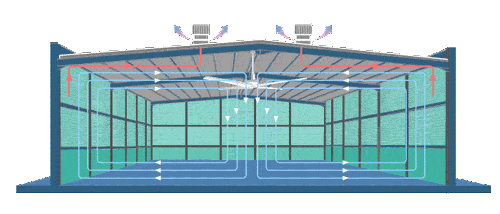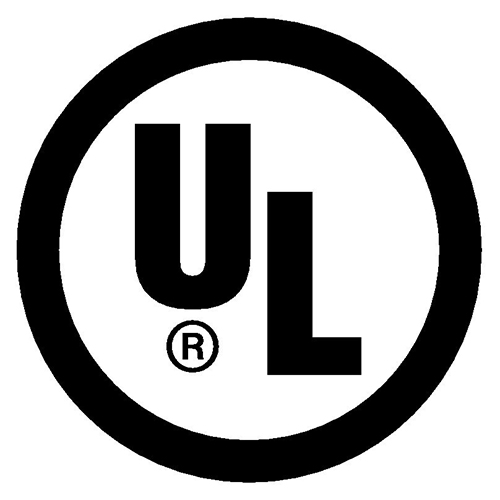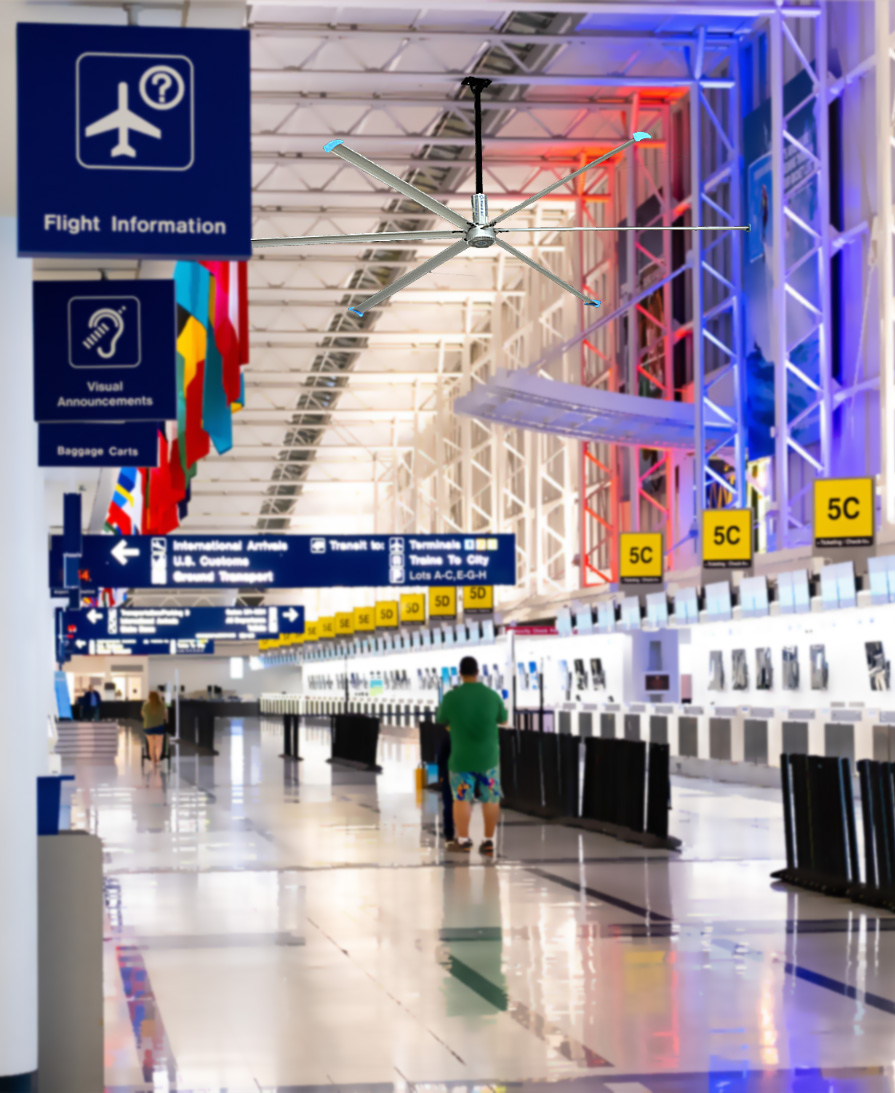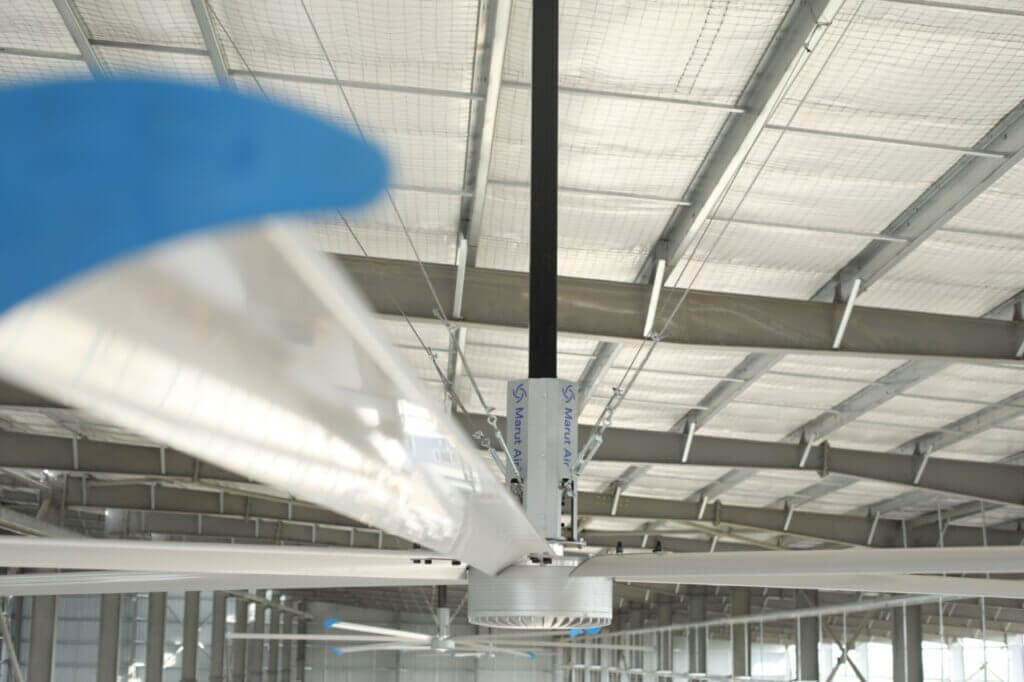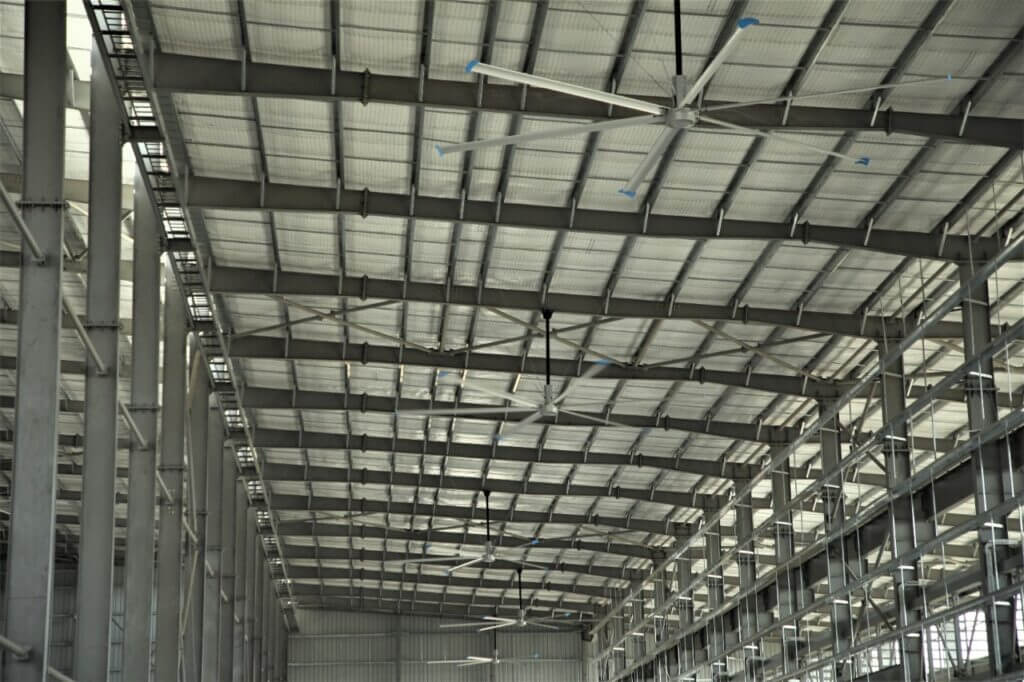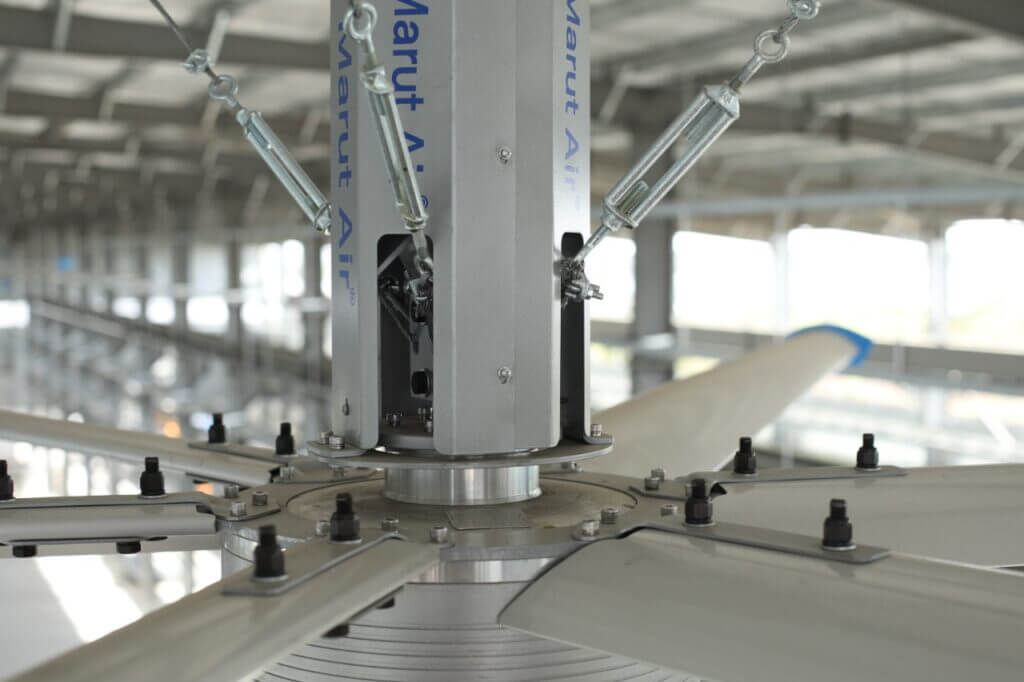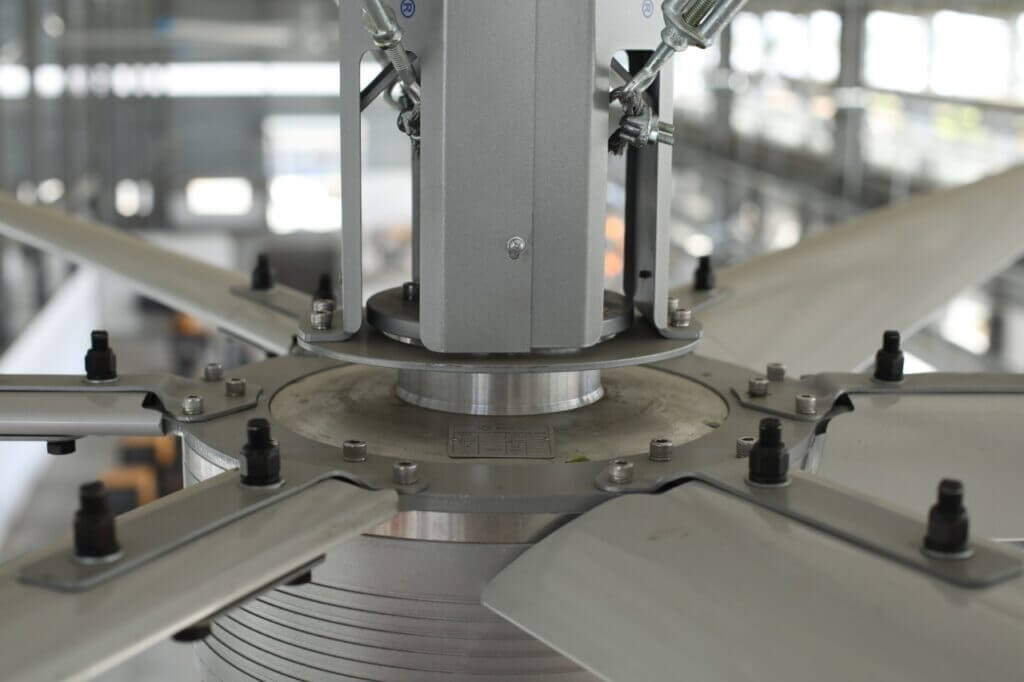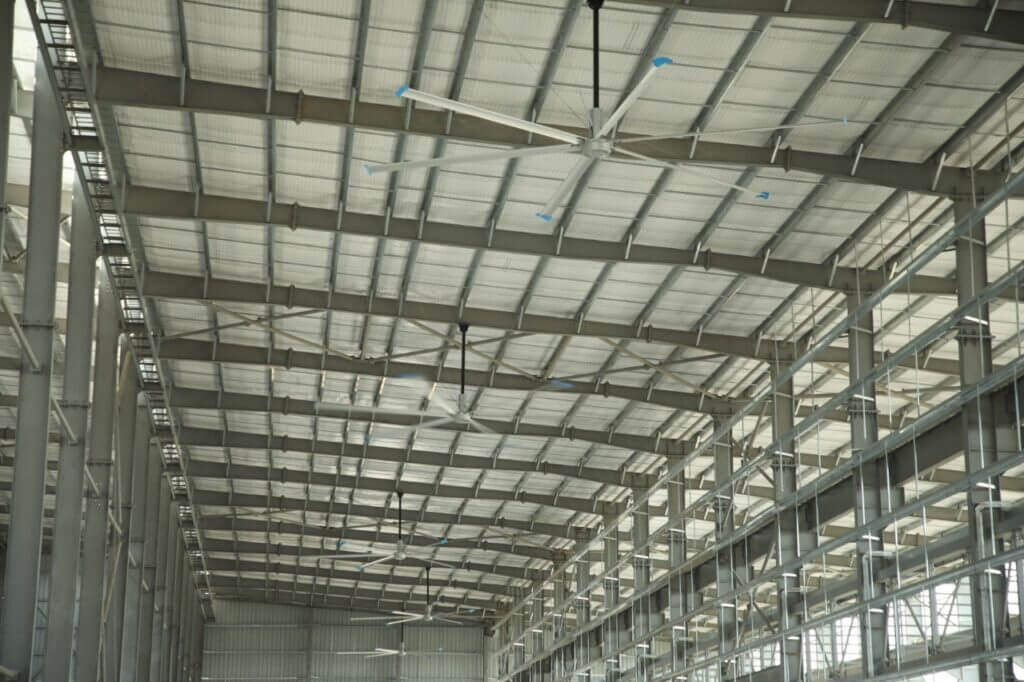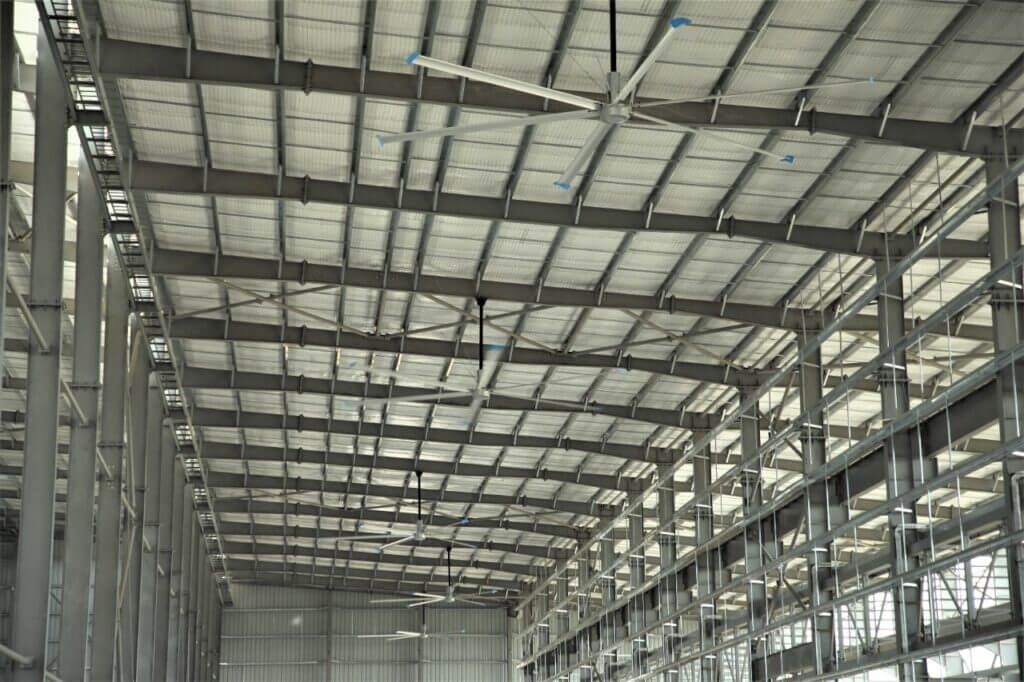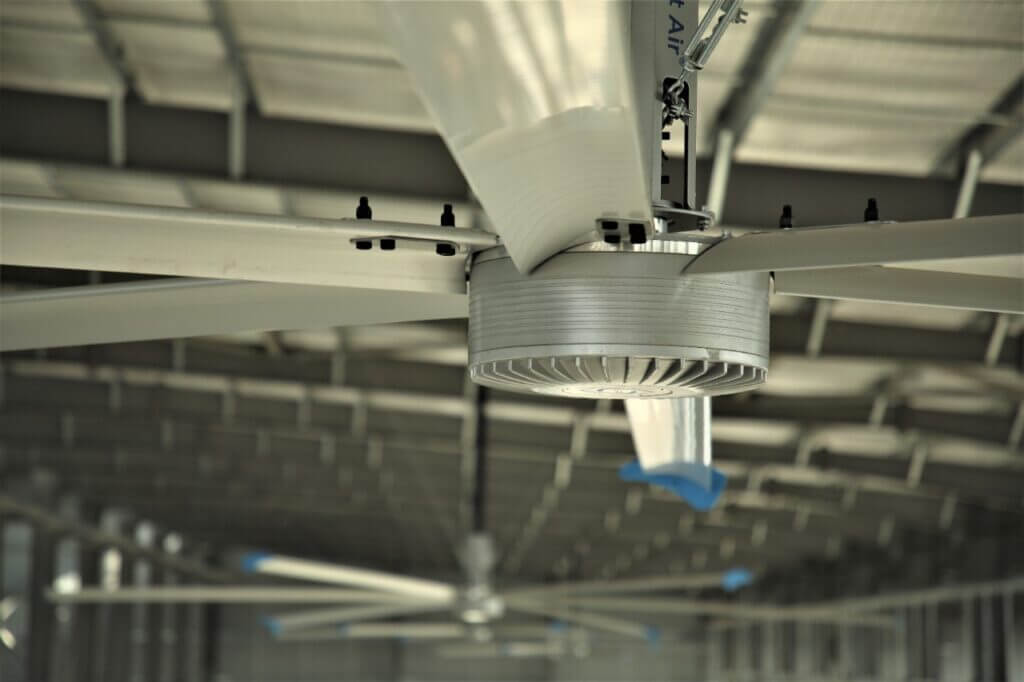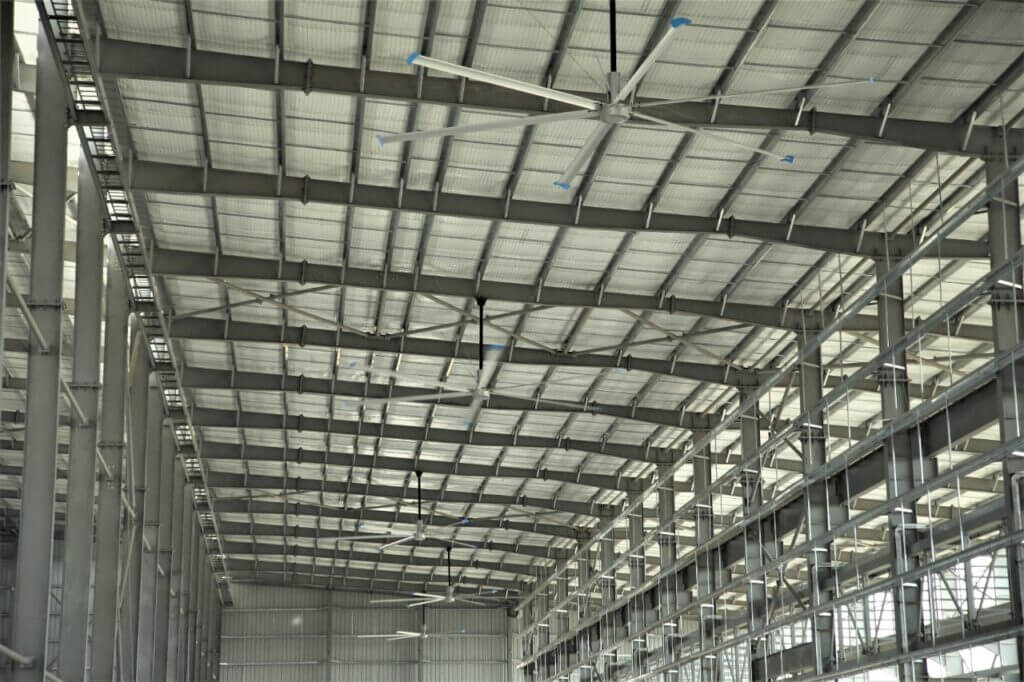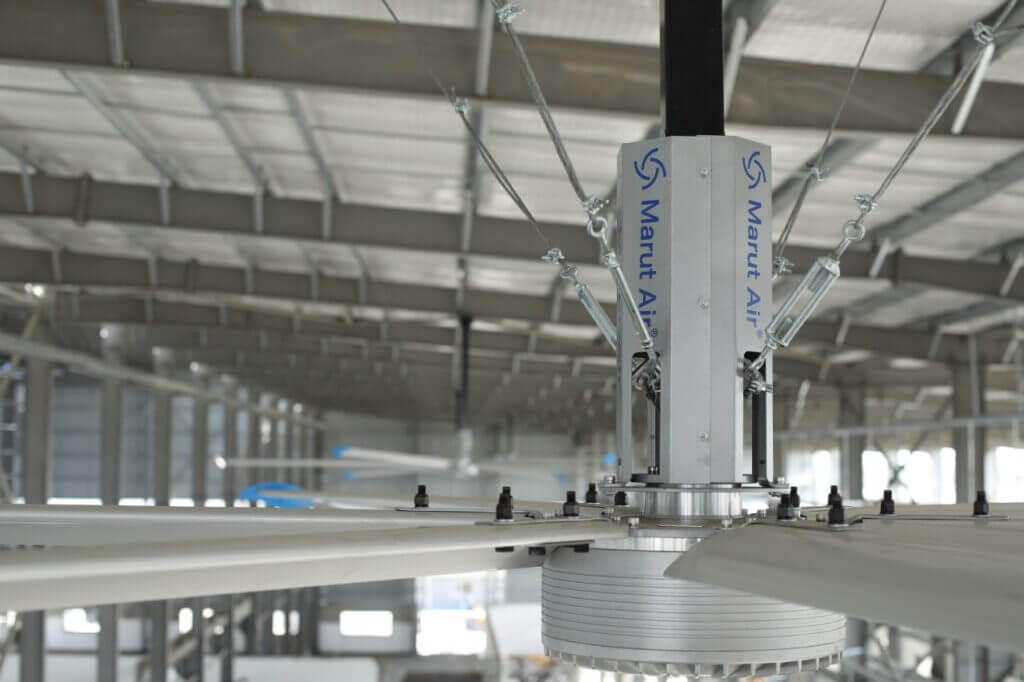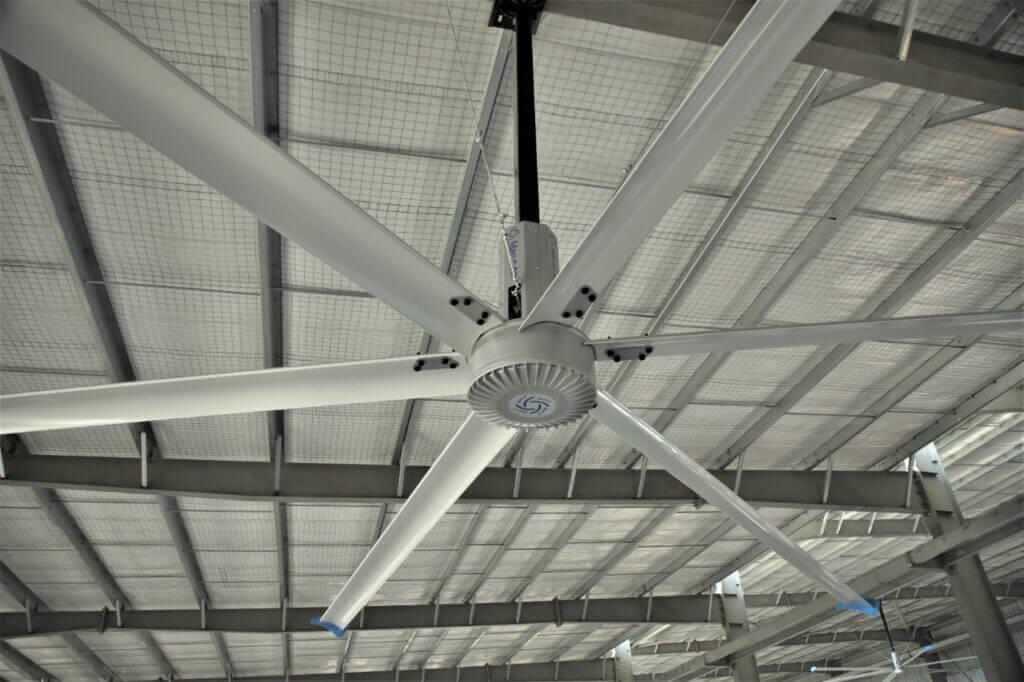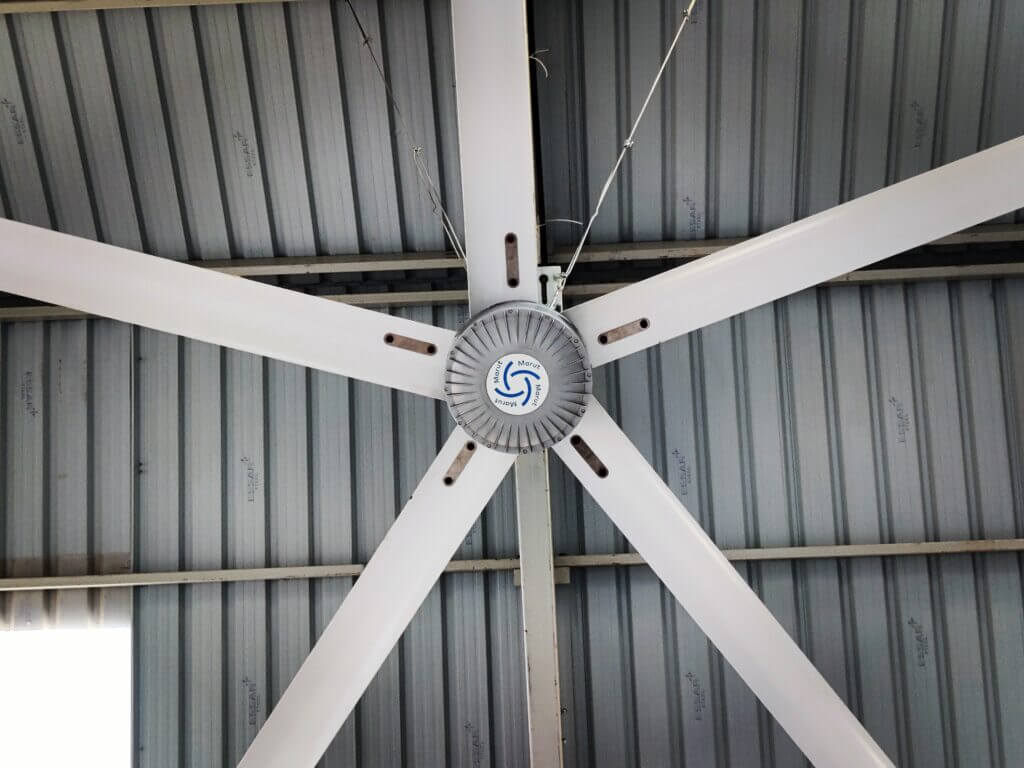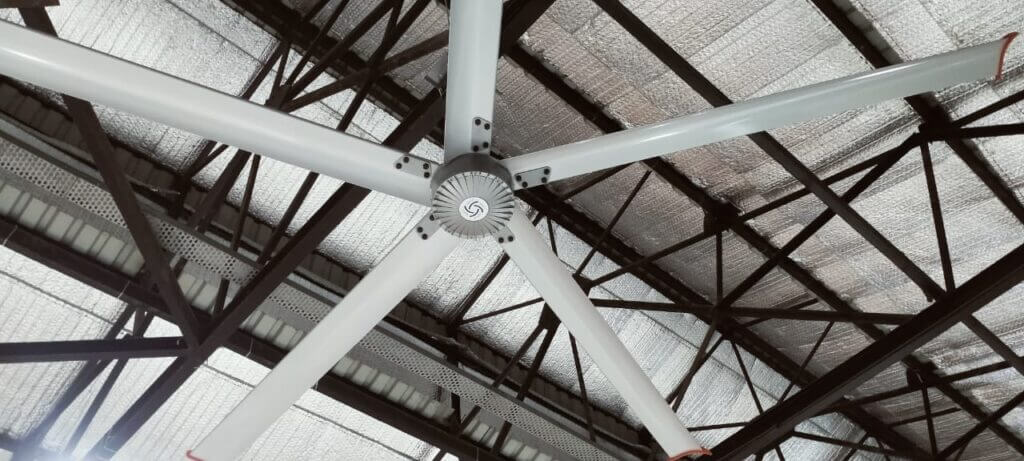What are HVLS fans?
HVLS fans, commonly known as High Volume Low Speed fans, are very large-sized mechanical ceiling fans. It is widely used for ventilation purposes in commercial and public places such as airports, railway stations, warehouses, factories, and many more. Its energy-efficient and cost-effective properties make it a better choice for large and open space areas. HVLS fans are used in place of expensive traditional HVAC systems to improve air quality and maintain the room temperature. It is used in those places where there is a need for a ventilating area of more than 40,000 square feet.
To regulate the temperature and humidity and ensure proper ventilation in the most crowded areas like airports, HVLS is the most efficient solution.
Benefits of using HVLS fans
Enhance air circulation and air quality: As the HVLS fans cover a wider area so they become more effective in crowded places where there is no space for ventilation. It is used to regulate the temperature and maintain the humidity so that the air remains purified.
Energy-efficient and cost-saving: It operates on less energy despite its huge size, which makes it a more efficient solution than other traditional fans or HVAC systems. Due to the low burden on HVAC systems, HVLS fans can help in lowering cooling costs..
Low maintenance cost: Due to its design, functioning, and operational mechanism, it results in lower maintenance costs. It is used to circulate the air, but the HVLS fans do this smartly and mechanically, which works efficiently and reduces the need for servicing and repairing.
Less noisy: The HVLS fans are designed in such a way that they operate on low speed and circulate a high volume of air. The main reason behind its lower noise is the RPM(Revolutions Per Minute) mechanism. This fan revolves so slowly that it does not make any noise.
Applications of HVLS fans
HVLS fans are beneficial for large space areas where there is a need for ventilation, but due to their large size, it is not possible to install traditional fans. Then, the HVLS creates its impact in those regions where it consumes less energy and saves the cost of operation. There is a diverse application of HVLS fans; a few of them are listed below:
- Factories and Warehouse
- Commercial Space (like malls, airports, auditoriums, gym, etc.)
- Agricultural and Dairy farms
- Institutional and Educational Buildings
- Event Hall and Religious Places
Things to consider while installing HVLS fans
Ceiling Height and Space Size: CMHVLS fans deliver the best results when hung from ceilings at least 15 feet high and in open areas that let air flow without bottlenecks. Before ordering, measure the room’s square footage to decide if one big fan or several smaller units will cover the space.
Obstructions and Structural Integrity: Walk the ceiling line and note any lights, beams, ducts, or other hardware that might block airflow or stop the blades. Also, check that the roof can bear the fan weight; if you doubt, ask a structural engineer to take a quick look.
Optimal Placement: Good airflow begins with smart placement. Sketch the floor plan, circle any obstacles, and mark spots where the fan can mount directly and distribute a steady breeze.
Electrical Specifications: Power needs to match, so confirm the fan volt rating and the circuit can carry that load. Review the wiring guide, follow local code, and call a licensed electrician if the job feels beyond your skill.
Safety: Always kill power at the breaker before touching wires, wear gloves, and double-check grounding before climbing the ladder.
Installation: Sit down with the manual and follow each step; tighten blade brackets and link the Variable Frequency Drive (VFD) as shown.
Balancing: After the unit spins, watch for wobble; a simple weight adjustment now cuts vibration, noise, and motor stress later.
Frequently Asked Questions on HVLS Fans for Airport
Question 1. How do HVLS fans create a cooling effect despite their huge size?
Answer – HVLS fans move a large volume of air with their long blades at a low speed, which promotes evaporation and regulates the temperature and humidity which creating a cooling effect.
Question 2. What is the appropriate size of HVLS fans for an airport?
Answer – A large space like an airport needs a fan that is enough to ventilate the air and cover as much as larger areas. So, a fan with a 12 to 14 diameter is considered an appropriate size for an airport. But based on the airport size and number of fans required, it is good to consult with the fan manufacturer or specialist to determine the optimal size of the fan for their project.
Question 3. In which area of an airport can HVLS fans be installed?
Answer – The HVLS fans are generally installed at the terminal, hangar, concourses, and administrative areas. It ensures proper air circulation, regulates temperature, and ventilates air for passengers’ comfort.






